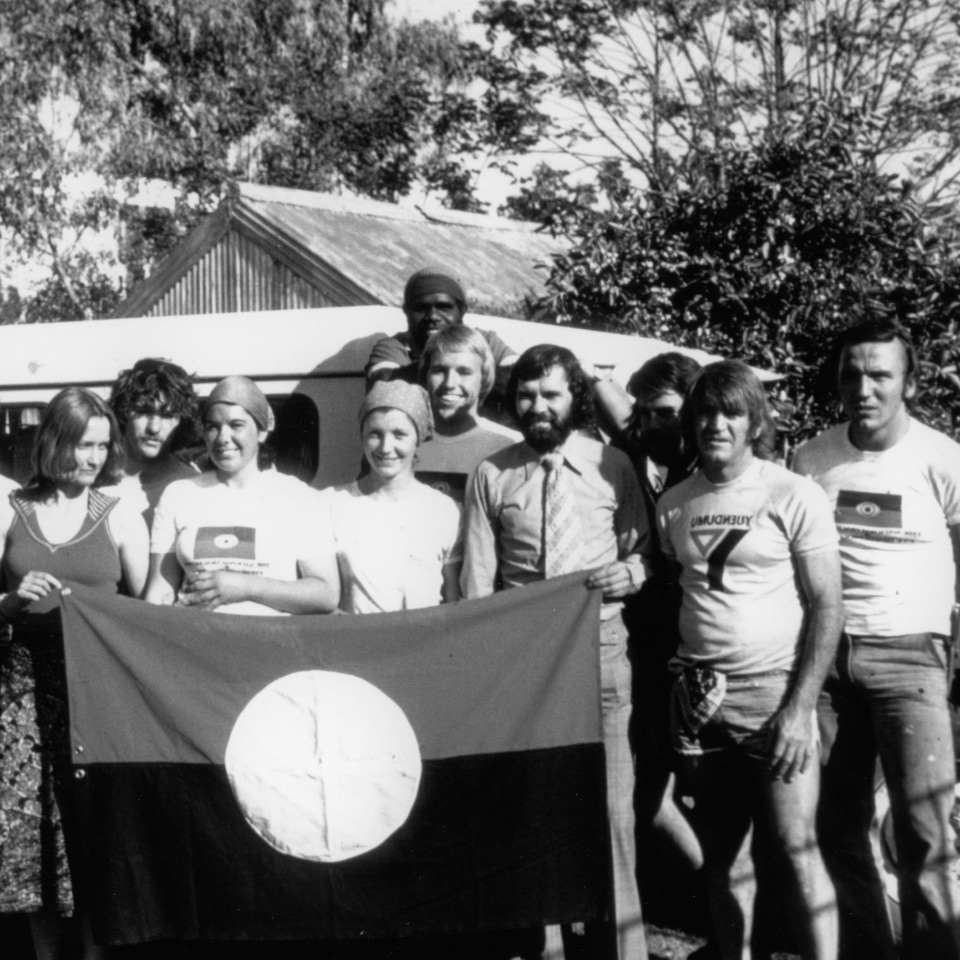A bold idea becomes a national mission
Fred, Gabi and Aboriginal and Torres Strait Islander health
In 1975, Fred, Gabi Hollows and a small team of dedicated health workers approached the Australian Government for funding to take on trachoma. They secured $1.4 million to create the National Trachoma and Eye Health Program. It was a two-year mission to eliminate trachoma, raise awareness of eye health, and deliver long-overdue care to communities that had been ignored for far too long.
Travelling in dusty old four-wheel drives, the program’s specialist teams were made up of doctors, nurses and Aboriginal health workers. They covered vast distances to reach some of the most remote parts of the country, including the Torres Strait Islands.
Key to the program’s success was the leadership and involvement of Aboriginal people such as Jilpia Jones, Rose Murray, Gordon Briscoe, Trevor Buzzacott and Reg Murray. They worked tirelessly alongside the teams, bridging cultural gaps, building trust and ensuring that the work was guided by community priorities rather than outside agendas.
There must be active community involvement, using the community’s own structures, in every aspect of disease control programs…and have a real say in the direction of any activities.
The results
Over the course of two years, the teams screened more than 100,000 people in 465 communities, performed 1,000 operations, treated 27,000 people for trachoma and delivered 10,000 pairs of individually prescribed glasses. The National Trachoma Program was a huge success; never before had such a large-scale system to provide specialist services been achieved.
